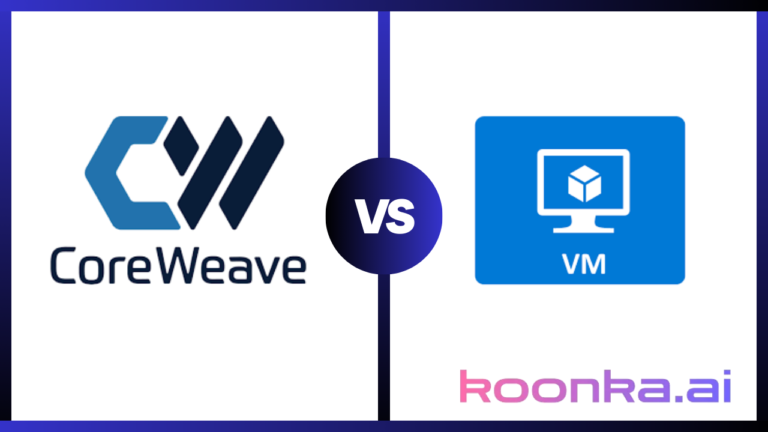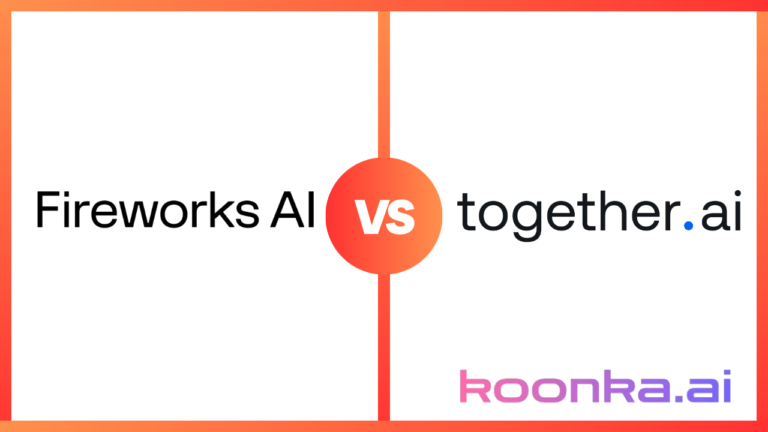Runpod vs AWS: Pricing, GPU Models, and Performance Comparison

If you’re deep into AI and machine learning, you’ve probably heard about GPU cloud services like Runpod and AWS. Both are big players helping you scale your ML projects without stressing infrastructure.
But let’s be real—choosing between them can be a headache. One offers lightning-fast deployment times and serverless scaling, while the other gives you robust flexibility with a long list of instance types. Both sound great, right?
But which one actually delivers the best bang for your buck? In this Runpod vs AWS comparison, we will break down their GPU models, pricing, and how they handle AI workloads, so you know exactly what you’re getting before you commit.
Affiliate Disclosure
We are committed to being transparent with our audience. When you purchase via our affiliate links, we may receive a commission at no extra cost to you. These commissions support our ability to deliver independent and high-quality content. We only endorse products and services that we have personally used or carefully researched, ensuring they provide real value to our readers.
Looking for top-tier GPUs without spending a fortune? Check out CUDO Compute! You can easily tap into high-performance NVIDIA and AMD GPUs on demand. Sign up now!
For a deeper understanding of CUDO Compute, take a look at this informative video:
Table of Contents
Runpod vs AWS GPU Comparison
Let’s break it all down so you can decide which one suits your needs.
GPU Models and Architecture
AWS GPU Instances

AWS offers several types of GPU instances catering to different workloads. These primarily include G3, G4, G5, P2, P3, P4, and P5 instances, each targeting different use cases such as gaming, machine learning (ML), and high-performance computing (HPC).
G3 Instances
G3 instances are powered by NVIDIA Tesla M60 GPUs, making them ideal for graphics-intensive workloads like 3D rendering, video encoding, and gaming. These GPUs are particularly good at handling multiple streams of video content. With a maximum of 4 GPUs (32 GiB of GPU memory) on the largest instance size (g3.16xlarge), these instances are suitable for tasks that demand robust GPU resources.
- Example Use Cases: Graphics visualization, 3D modeling, game development.
- Pricing: Ranges from $0.75/hr for g3s.xlarge to $4.56/hr for g3.16xlarge (on-demand pricing).
G4 Instances
The G4 family is split into G4dn (NVIDIA T4 GPUs) and G4ad (AMD Radeon Pro V520 GPUs). The G4dn instances are optimized for machine learning inference and small-scale training, while G4ad is designed to offer 45% better price performance for graphics-intensive workloads like rendering.
- G4dn: Good for ML tasks, with up to 8 T4 GPUs, 96 vCPUs, and 1.8 TB local NVMe SSD storage.
- G4ad: Up to 4 AMD Radeon Pro V520 GPUs, 64 vCPUs, and 2.4 TB NVMe SSD storage.
- Pricing:
- G4dn: Starting at $0.526/hr for g4dn.xlarge, up to $7.824/hr for g4dn.metal.
- G4ad: Ranges from $0.379/hr for g4ad.xlarge to $3.468/hr for g4ad.16xlarge.
G5 Instances
G5 instances are designed for demanding graphics workloads and machine learning inference. They use NVIDIA A10G Tensor Core GPUs, featuring up to 8 GPUs and 192 vCPUs.
- Example Use Cases: Video rendering, machine learning inference, and high-end graphics.
- Pricing: Starts at $1.006/hr for g5.xlarge, scaling to $16.288/hr for g5.48xlarge.
P2 and P3 Instances
P2 and P3 instances are designed for deep learning training and high-performance computing. The P2 instances come with NVIDIA K80 GPUs, while P3 instances pack the more powerful NVIDIA V100 GPUs.
- P2 Use Case: Distributed deep learning training, HPC applications.
- P3 Use Case: More advanced machine learning, offering higher network throughput with up to 100 Gbps.
- Pricing: P3 instances are notably more expensive, with p3.16xlarge costing $24.48/hr.
P4 and P5 Instances
P4 instances, using NVIDIA A100 Tensor Core GPUs, and the recently introduced P5 instances with NVIDIA H100 Tensor Core GPUs, are ideal for ML training and HPC applications at large scales. The P5 instances offer substantial improvements in memory bandwidth and networking, with the ability to scale up to 20,000 GPUs using AWS’s UltraClusters.
- Pricing: P4d.24xlarge costs $32.77/hr, while P5 instances are expected to be priced at a premium.
Fuel your AI and machine learning projects with CUDO Compute’s powerful cloud GPU resources— Sign up now!
Runpod GPU Offerings

Runpod takes a different approach, offering a range of NVIDIA GPUs, including some of the most recent and powerful options like the H100, A100, and RTX series. Runpod is also known for its flexible pricing model, billing by the minute, which is attractive for users who need short-term GPU power without long-term commitments.
NVIDIA H100 and A100
Runpod offers both H100 PCIe and H100 SXM, with the H100 series being some of the most powerful GPUs available today. These GPUs are ideal for large-scale machine learning models, particularly in NLP and computer vision.
- Pricing:
- H100 PCIe: $2.69/hr on Secure Cloud.
- H100 SXM: $2.99/hr on Secure Cloud.
- A100: Starts from $1.19/hr for A100 PCIe on Community Cloud, $1.89/hr for A100 SXM.
RTX Series
For users who need strong performance for rendering or even some light machine learning, Runpod’s RTX 3090, RTX 4090, and RTX 6000 series are good mid-tier options.
- Pricing:
- RTX 3090 starts at $0.22/hr.
- RTX 6000 Ada begins at $0.79/hr.
AMD MI300X
Runpod also provides AMD MI300X GPUs, which are known for their excellent memory bandwidth and high VRAM (192 GB), making them ideal for large datasets and complex models.
- Pricing: Starts at $3.49/hr, with 192 GB VRAM.
Looking for flexible and scalable cloud GPU solutions for AI or rendering? CUDO Compute offers reliable services at great rates. Sign up now!
Storage and Network Performance
AWS:
When it comes to cloud infrastructure, AWS (Amazon Web Services) sets the standard with its versatile and scalable infrastructure solution. One of AWS’s strongest features for GPU-based instances is its use of NVMe (Non-Volatile Memory Express) SSD storage. NVMe is a game-changer for high-performance computing tasks, particularly those involving large datasets, such as machine learning and big data analytics. Why? Because NVMe SSDs provide lightning-fast read/write speeds that minimize delays in accessing large volumes of data.
For example, AWS offers instances like the p4d.24xlarge, which comes packed with 8 x 1000 GB NVMe SSDs. This level of storage is ideal for fully managed data warehousing and other storage-intensive workloads. If you’re running complex machine learning models or working with vast datasets that require fast data access, these instances help eliminate storage bottlenecks, making sure that your processes run smoothly without significant latency.
But storage is only part of the equation. Let’s talk about networking, an area where AWS also excels. Networking performance is crucial for distributed computing tasks—where multiple nodes must communicate and share data across a cloud cluster. AWS provides instances equipped with Elastic Fabric Adapter (EFA), a technology that allows for ultra-low latency and high-bandwidth networking. This is particularly useful in distributed machine learning, where fast inter-node communication is a must to avoid slowdowns in training large-scale models.
For instance, instances like the P3dn and P5 series, which are often chosen for compute-heavy tasks, benefit from this advanced networking capability. With AWS, network bandwidth scales with instance size, reaching up to 400 Gbps (Gigabits per second) on the P4 and P5 instances. To put that in perspective, this level of bandwidth allows you to move large datasets across nodes without worrying about hitting performance bottlenecks. It’s the kind of infrastructure that makes AWS a go-to for organizations looking to push the limits of cloud computing infrastructure.
AWS’s strategic edge locations around the globe also make it easier to reduce latency by routing traffic through the nearest data center to the user. This not only improves performance but also supports log access networks and other real-time applications, making AWS a solid choice for companies needing fast, reliable networking.
Runpod:
While Runpod might not be as well-known as AWS, it has carved out a niche as a cloud GPU provider, offering competitive pricing and performance. When it comes to storage, Runpod’s offerings are simpler, but still more than adequate for many users, especially those in machine learning, rendering, or similar workloads that demand high computational power.
Runpod leverages NVMe SSD storage across its GPU instances, similar to AWS. One standout is the H100 series, which includes 125 GB of RAM paired with NVMe SSD storage. While Runpod doesn’t offer as many storage configurations or as much storage capacity as AWS, most users will find its offerings sufficient for workloads that don’t require massive datasets or need to process petabytes of information. This makes Runpod a great option for independent software vendors or managed service providers that prioritize performance but don’t require the high-end configurations AWS provides.
Runpod’s networking performance also doesn’t match AWS’s 400 Gbps capacity, but it remains highly competitive for smaller or mid-sized tasks. If your workload doesn’t involve massive data transfers across multiple nodes in real time, Runpod can still deliver more than enough performance to keep you running smoothly. Its on-demand support and flexible infrastructure make it a popular choice for organizations that need powerful, scalable computing infrastructure without the need for ultra-high bandwidth or strategic edge locations.
For smaller-scale distributed computing tasks, such as dynamic label generation for data analytics or on-demand cloud clusters, Runpod’s network speeds are more than adequate. In these scenarios, the slightly reduced bandwidth compared to AWS won’t be a bottleneck. Additionally, Runpod’s simpler pricing model and competitive offerings make it easier for organizations to optimize their cloud transformation strategy without overspending on resources they may not fully utilize.
For AI, machine learning, and high-performance computing tasks, CUDO Compute is a fantastic option, providing immediate access to NVIDIA and AMD GPUs. Sign up now!
Runpod vs AWS Pricing Breakdown
AWS Pricing
AWS GPU instances can be expensive, especially when opting for larger, more powerful instances like P3 or P4. However, AWS offers a reserved instance pricing model, which allows you to reduce costs if you commit to a one-year or three-year term. This is beneficial if you need consistent access to powerful GPU instances over a longer period.
- On-demand pricing: Flexible but costly.
- Reserved pricing: Significant discounts if you lock in for a longer period.
Runpod Pricing
Runpod’s standout feature is its pay-by-the-minute model, which can offer considerable savings for short-term GPU needs. It also has lower starting prices compared to AWS for similar GPUs, which makes it a strong choice for users who don’t need the advanced networking or massive instance sizes that AWS provides.
- On-demand pricing: Starts as low as $0.22/hr for community GPUs like the RTX A5000.
CUDO Compute provides affordable cloud GPU solutions that are strong and customized for your AI and machine learning projects. Sign up now!
Use Case Suitability
AWS: Best for Large-Scale, High-Performance Workloads
AWS is great for companies that need high-performance cloud infrastructure, especially for distributed machine learning and high-performance computing (HPC). If you have tasks that have multiple nodes working together to process huge datasets in real time, AWS has the infrastructure to scale. Its cloud-based virtual machines through Elastic Compute Cloud (EC2) make it easy to deploy and manage big applications and its high-speed log access network makes data handling fast.
One of the key features of AWS is its Elastic Fabric Adapter (EFA) which reduces latency and improves performance in distributed applications. This makes AWS great for running big machine-learning models that need real-time updates across multiple nodes. Plus AWS has a public cloud infrastructure that can support businesses all over the world with built-in redundancy so you can have guaranteed uptime. This is critical if your business can’t afford downtime like financial services, healthcare, or big data analytics platforms.
Another advantage AWS has is its many additional services (like GCP and other Google cloud services) that can be easily added to your workflow. For example, its S3 storage service is great for handling big unstructured data. Need serverless computing to automate parts of your application? AWS Lambda is a great solution for this, you can run code without provisioning servers. If you are already using other AWS services it makes sense to add your cloud-based virtual machines for GPUs to the rest of the AWS ecosystem so everything works seamlessly across your entire workload.
Last of all AWS excels in its security features. For enterprises that work with sensitive data AWS has compliance with various global security standards so it’s easier to meet regulatory requirements. From encryption to multi-factor authentication AWS has security as a top priority across its services. If your project involves handling proprietary or sensitive data AWS’s security features will give you peace of mind.
Runpod: Ideal for Cost-Effective, Flexible GPU Workloads
While AWS and other big cloud GPU providers like Google Cloud Platform are for enterprise-level offerings, Runpod is great for developers, startups, or organizations that need cost-effective GPU solutions. If your GPU needs are modest and don’t require the high-performance features or big storage options of AWS, Runpod is a more affordable and flexible option.
For example, if you are working on shorter tasks like video rendering, small model training or running inference on pre-trained models Runpod gives you access to GPUs without the big price tag. This is especially great for individual developers or smaller teams that don’t need continuous access to big scalable infrastructure but need a quick and efficient solution for short-term projects.
Runpod’s pricing model is great for those who are trying out different models or running smaller workloads. Whether you are testing out new algorithms, fine-tuning models, or doing small-scale AI research Runpod’s platform can save you cost while still giving you enough power to get the job done. For startups that need to be budget-conscious but still need access to powerful GPU resources Runpod is a very attractive alternative to AWS.
The platform is great for use cases like video rendering or 3D model rendering where GPU is critical but only needed for short periods of time. Also, Runpod’s infrastructure is good for smaller inference tasks or jobs where the dataset isn’t big but still needs GPU acceleration. It’s also good for individual developers who don’t want to be locked into the bigger pricing structures of platforms like AWS but still need the GPU power to get their job done.
Runpod doesn’t have all the advanced features of AWS like log access network or high-performance networking through Elastic Fabric Adapter but it has enough power and flexibility to be competitive for smaller or mid-sized tasks. For businesses or individuals that need specific short-term GPU needs, Runpod is a reliable and cost-effective solution that doesn’t compromise on performance.
Runpod vs AWS: Which GPU Provider Is Best for You?
AWS offers unparalleled scalability, networking performance, and a wide range of GPU options for virtually any workload. However, it comes with a higher price tag and is better suited for long-term or large-scale enterprise projects. Runpod, in contrast, offers significant cost savings, especially for smaller or intermittent jobs, making it a great alternative for developers who need powerful GPUs but don’t want to commit to AWS’s pricing model. The choice ultimately depends on your workload and budget.
To power your AI and machine learning projects, CUDO Compute delivers strong and budget-friendly cloud GPU solutions designed for peak performance. Sign up now!







